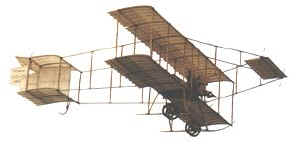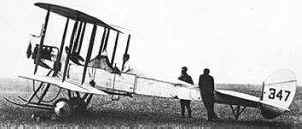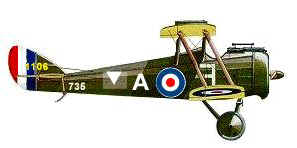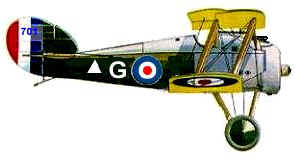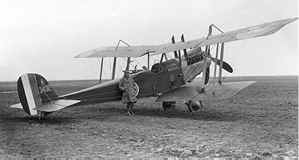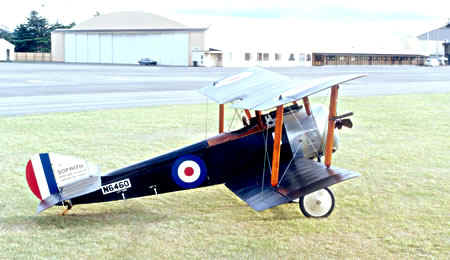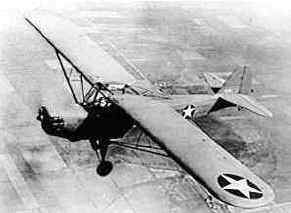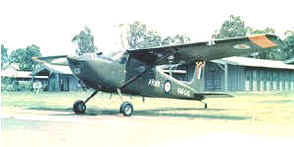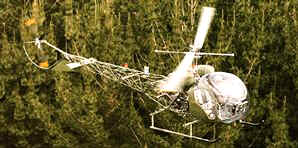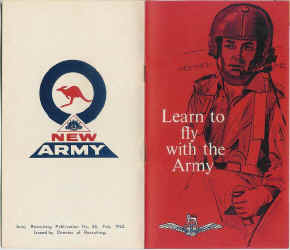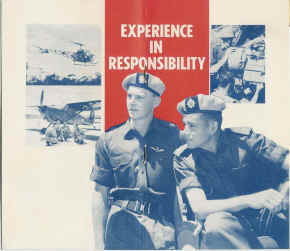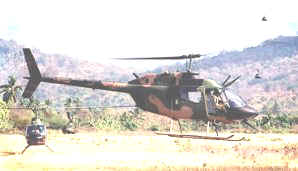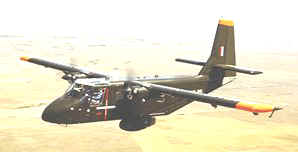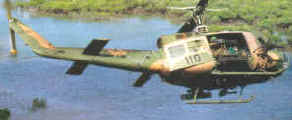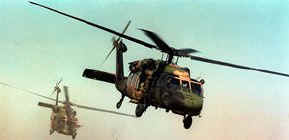 |
|
|
|
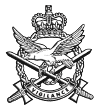 |
History of Australian Army Aviation |

Australian Flying Corps |
|
from Boxkite to Blackhawk |
||
|
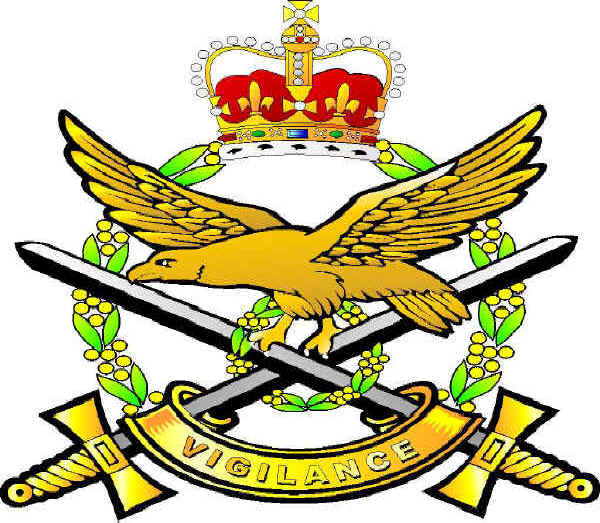
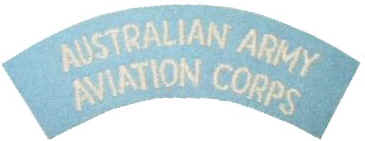
 |
|
The original Pilot's Wings for the Australian flyers was the AMF (Australian Military Forces) type. Note the absence of a crown. This is the 1916 version. An earlier (1915) version had a crown and was approved but may not have been manufactured. |
|
In the Beginning... Probably the most important factor leading to the raising of a flying unit in the Australian Army was the formation of the Aerial League of Australia in Sydney on 28 April 1909. The meeting was organised by George Augustus Taylor (1872-1928), a man of wide interests and soon to be an honorary lieutenant in the Australian Intelligence Corps because of his glider flying and wireless experiments, and Major Charles Rosenthal (1875-1954), an architect and Citizen Force gunner. In the chair was Lawrence Hargrave (1850-1915), gentleman-inventor, who, among other things, had been researching human flight for a number of years and discovered that a curved upper surface of an aerofoil generates an increase in lift. The Aerial League was a pressure group and one of its members, Charles Lindsay Campbell (1863-1912), secretary of the Queensland Branch, wrote to the editor of the Brisbane Courier on 12 October 1910 that: "…aircraft at a few hundred feet could, with certainty, drop a most dangerous explosive down the thirty foot diameter funnel of one of the modern Dreadnoughts". Campbell went on to suggest that military aviation should be developed in Australia and soon after he wrote to the Minister of Defence submitting a plan for a school of aviation and an aviation corps. (Campbell has the melancholy distinction of being the first Australian to die in an aircraft accident when his Bristol Monoplane stalled at 300 feet, near Brooklands Surrey, on 3 August 1912.) Due to the agitation of the Aerial League and others, the Minister of Defence, Senator George Pearce (1870-1952), when in the UK for the 1911 Imperial Conference, visited Brooklands the home of British aviation, and decided there should be a flying school in the Defence Department. Given the distances, the communications of those days, the lack of technological knowledge, that the Royal Australian Navy was being raised and the Army was busy in setting-up and then administering a large universal training and cadet scheme, there was a fairly quick reaction to the Minister’s decision. Aircraft were ordered, two flying instructors (honorary lieutenants) and four mechanics were selected, an airfield was chosen (Point Cook, although, for a number of years, the address of the Central Flying School was Werribee), stores and equipment delivered and Military Orders issued. The aircraft ordered from the UK on 3 July 1912 were two Deperdussins and two BE2a (BE for "Bleriot Experimental", later for "British Experimental") and, on 6 December 1912, one Bristol Boxkite. The first Course began at the Central Flying School, Point Cook on the 17th August 1914, two weeks after the declaration of war. There were only four students: Lt R Williams, a permanent member of the Administrative and Instructional Staff, (later to become Chief of the RAAF Air Staff, for a number of years between the wars and the first Director-General of Civil Aviation) and three Citizen Force officers - all from Victoria - Capt T W White, 2Lt D T W Manwell and 2Lt G P Merz Eight courses were conducted at Point Cook during the Great War, but some of the 85 pilots produced were transferred to squadrons being raised before they qualified. The NSW Education Department also trained a number of pilots, mainly for the Royal Naval Aviation Service and the Royal Flying Corps, at Ham Common, now the site of RAAF Richmond. Ab Initio training was on Bristol Boxkites, engine starting and taxiing on a Deperdussin and advanced flying on the BE2a or equivalent types. Soon after war was declared a BE2a and a Farman seaplane were crated and sent on HMAS Una to assist in the second phase of the seizure of German New Guinea possessions. The pilots were Lt E Harrison, one of the two flying instructors, and the recently qualified Lt G P Merz. The aircraft were not required and were returned to Point Cook from New Guinea still in the crates. Early in 1915, in response to a request from the Viceroy of India, the First Half Flight of the AIF`s Australian Flying Corps, about fifty all ranks, was raised at Point Cook for service in the ill-starred Mesopotamia campaign. The pilots were Capt H A Petre, the other original flying instructor, Capt T W White and Lt Merz of the 1st Course and Lt W H Trealor, a Citizen Force infantry officer who had learned to fly in the UK. The Half Flight married-up with their aircraft at Basra and later were absorbed into 30 Squadron Royal Flying Corps. Lt Merz was to be the first Australian pilot killed on active service and both White and Trealor were to be prisoners of war of the Turks. Four AFC squadrons were raised in the AIF during the Great War. 1 Squadron was formed at Point Cook, left Australia on 16 March 1916 and saw action in Egypt and Palestine. Its wide range of aircraft included the Martinsyde, BE2c and e, Bristol Scout, Bristol Fighter and the RE8. Its longest serving CO was Major R Williams of 1st Course and an original pilot was Lt F H McNamara of 3 Course, who won the AFC`s only VC. The other three squadrons flew on the Western Front. 2 Squadron, beginning in October 1917, flew fighters, firstly the DH5 and then the SE5a. 3 Squadron was a Corps reconnaissance squadron and were equipped with the two-seater RE8 from September 1917 and 4 Squadron, which began operations in January 1918, flew the rotary-engined Sopwith Camel and then the Sopwith Snipe for the last month of hostilities. To back-up the squadrons in the field there were four AFC Training Squadrons (Numbers 5 to 8) in the UK. The great German offensive of March 1918 and the possible threat of Japan spurred the Australian Government into approving a defence plan to have fifteen squadrons, 654 officers and 7,209 men and 270 aircraft, (most to be built locally) by 1921. This, of course, came to nothing with the Armistice in November 1918, although a number of officers and men had returned to Australia to put the scheme into effect. In 1919 and 1920 various committees considered the future of military aviation in Australia and it was eventually decided to raise an Air Force which came into being on 31 March 1921 (the prefix Royal came in July 1921) with 21 officers and 130 airmen. The great majority had served in the AIF overseas in the AFC. Flight training of Army personnel then ceased although an association with aircraft was maintained during the War of 1939-45 when RAA officers flew as observers with RAAF pilots and directed artillery fire, mostly from Auster Mk III light aircraft. Following World War Two During 1946 the Brigadier Royal Artillery at Army Headquarters, Brig L G H Dyke, arranged for Capt K J Oram to be trained as an Air OP pilot in the UK. Oram then gained a further qualification as a flying instructor and, at RAF Middle Wallop, taught the next RAA officer, Capt J Benjamin to fly. Oram returned to Australia and, although he was never posted to a flying position, his influence on future Army aviation developments was very significant. After much inter-Service discussion the CAS and the CGS agreed that Army pilots should fly their light aircraft on Air OP duties. This opened the way for, the now Maj Benjamin, to become the Army flying instructor in 16 Air OP Flight which had been located at RAAF Fairbairn in Canberra since early 1946. With a strength of 6-8 Auster Mk III aircraft the flight was part of 3 (Tac/R) Squadron RAAF, so the RAAF retained ultimate responsibility for the Flight and its operations. Two RAA pilots, Lts B T Luscombe and B C Forward, began their training in January 1951 followed by two more trainees every six months. On graduation the newly badged pilots remained for a further six months as the operational element of the flight before being posted elsewhere. Meanwhile a third RAA officer, Capt W J Slocombe, had followed his two predecessors to the UK and returned, in due course, as a qualified flying instructor to take over from Benjamin. Until the Flight’s disbandment on 30 November 1960, this pattern continued with all pilot training being done in Australia except for instructor training which continued to be done in the UK. About one in six of the graduate pilots were selected for this role. Although the support provided to the Army by the flight was minuscule, it did introduce the Army over a period of nine years to the potential benefits of such a resource. It did so by undertaking Air OP duties for a variety of units and by playing a significant role in the major formation exercises that were mounted from 1958. Valuable experience came also from the inclusion of RAA pilots in 1903 Independent Air OP Flt RA when part of the British Commonwealth Division in Korea. From 1951 to 1953 five Australians served in the Flight including one killed in action. (Captain Luscombe) A further source of light aircraft support for the Army and experience for the pilots came from the raising of 1 Army Aviation Company in 1957. With Benjamin as its OC, it consisted of a small group of Army officers and senior NCO pilots who operated civil aircraft on charter to the Army. In total, the Flight and the Company were unable to meet more than a fraction of the Army’s need for light aircraft support and the capacity and age of the Auster Mk III exacerbated the deficiency. In 1958 the Austers were replaced by Cessna 180A models slightly modified for Army service. By that time agreement had been reached in the Defence Committee for the Army to have its organic light aircraft but firm plans to implement that decision were not developed until 1960. On 1 December 1960, 16 Army Light Aircraft Squadron was formed at RAAF Amberley from the disbanded 16 Air OP Flight and 1 Army Aviation Company. Six Cessna from 16 Air OP Flight and eleven Bell 47G2 Sioux helicopters made up the original aircraft in the squadron which included a training flight and an operations flight. Initially the CO and the Chief Flying Instructor were RAAF, as was the entire servicing crew. Except for a few administrative personnel the remainder were Army. The scale and the variety of the support provided for the Army were considerably increased together with the output of trained Army pilots. Army units and formations, both Regular and CMF, continued the process of learning how to make better use of this resource. Command of the Squadron passed to the Army when Lt Col William Slocombe took over as CO on 18 December 1964. During his tenure the Squadron became 1 Aviation Regiment on 26 April 1966. Before that date a permanent detachment of two Cessna 180 aircraft were deployed to PNG Command and, in 1965, 182 Reconnaissance Flight of two Sioux helicopters was deployed to Malacca, Malaya to support the Australian infantry battalion of 28 Commonwealth Infantry Brigade. This Flight was later absorbed into 28 ANZUK Aviation Squadron and then disbanded when the Australian forces were withdrawn from the theatre in 1973. When the first Australian battalion group (1 RAR) entered the South Vietnam theatre in June 1965, 161 Independent Reconnaissance Flight had also been readied for deployment and followed 1 RAR in September of that year. Initially at a strength of two Cessna 180 and two Sioux aircraft, the Flight was increased to four Cessna and six Sioux by the end of 1967. In 1970 three of the Cessna were replaced by Pilatus Porter aircraft, which had already replaced the Cessna in Australia during 1968 and 1969. Back in Australia, during 1968, 1 Aviation Regiment deployed 183 Reconnaissance Flight to Lae in PNG and withdrew the original small permanent detachment. At the same time preparations were well in hand to form the Australian Army Aviation Corps. This was done on 1 July 1968 with a Corps strength of 106 officer pilots. Since then officers and other ranks trained in aviation trades other than flying duties have been absorbed into the Corps. Another re-location from Amberley occured in early 1969 when 171 Air Cavalry Flight deployed to Holsworthy. Its first home was on a disused rifle range but when that was taken over by the NSW Government in 1975 for housing, a new and substantial airfield and facilities were built for it on the western edge of the Holsworthy training area. Exactly a year after the Corps was formed, the Army formally took over the Oakey aerodrome from the Department of Civil Aviation on 1 July 1969. When a number of steel temporary buildings were erected at Oakey, 16 Aviation Squadron (Reconnaissance) moved there from RAAF Amberley. A major building programme was eventually approved and construction got under way. By 1 August 1972 enough of the new base was ready for the remainder of 1 Aviation Regiment and for additional Army Aviation units to be raised and moved there. These were Headquarters Army Aviation Centre to control Oakey Army Airfield, and the Army Aviation Centre Base Squadron. In South Vietnam, 161 Independent Reconnaissance Flight re-deployed from its original location at Bien Hoa to Vung Tau in June 1966. When its airfield was completed within 1 Australian Task Force area at Nui Dat, the Flight established itself there in March 1967. By this time its ten aircraft were delivering a planned flying rate of 1,200 hours a month. To sustain that rate, servicing crews, which were gradually being manned by Army aircraft tradesmen, did much of their work overnight. During 1968 and 1969 elements of the Task Force were occasionally operating beyond the economical range for the aircraft, so detachments were then deployed away from the main servicing facilities, thereby adding to the servicing workload. Usually a Sioux was allocated in direct support of each infantry battalion deployed outside the Task Force base. Other routine daily tasks were visual reconnaissance, electronic surveillance and route clearance. Varying degrees of operational risk attended most missions and a number of aircraft were lost. By late 1971 three pilots had been killed in action, three Cessna 180, one Cessna L19 (Bird-dog), a Pilatus Porter, eight Bell Sioux and one Bell Kiowa had been destroyed by enemy action and 14 fixed wing and 20 rotary wing hit by ground fire. Beginning in 1971 the Australian force was gradually withdrawn from the theatre with most of the Flight departing during December 1971. The last members moved out in March 1972 to return to RAAF Amberley. In the last months of 1971 at Nui Dat, 161 Independent Reconnaissance Flight had operated a number of turbine powered Bell Kiowa on loan from the US Army. At the same time in Australia, the process of determining a replacement for the Bell Sioux had settled on the Bell 206B or Kiowa. The first 12 of these aircraft were delivered from the Bell Factory in Fort Worth Texas, but the remainder of the order was built by the Commonwealth Aircraft Corporation at Fisherman’s Bend. When the deliveries were completed, the Australia Army’s fleet of aircraft were all turbine powered. The Army Aviation presence at RAAF Amberley ceased by the end of 1973 when the School of Army Aviation and 5 Base Workshops Battalion finally departed for Oakey, by then a well-established base. At the same time a reorganisation of some of the Aviation squadrons and flights was completed so that 173 General Support Squadron and 171 Command and Liaison Squadron were formed at Oakey while 171 Air Cavalry Flight at Holsworthy became 161 Reconnaissance Squadron. Some four years later the Government Aircraft Factory Nomad was introduced into Army Aviation. From the first delivery in July 1977, this twin-engined aircraft added a new dimension to the capacity of Army Aviation by greatly improving its ability to deploy its aviation assets in the field and by providing a faster, larger and longer range aircraft to support the Army. In February 1976, 183 Reconnaissance Flight was withdrawn from PNG and disbanded. This was the last of the overseas deployments and Australian Army Aviation was now deployed with 161 Reconnaissance Squadron at Holsworthy, 162 Reconnaissance Squadron in Townsville and the remainder at Oakey. The Army Aviation other rank trade of Aircraft Handler, which had been introduced in 1972, was now joined in 1981 by the Aircrewman Observer. And in the Present In 1986 the Chiefs of Staff Committee decided that all battlefield helicopters, with no size or weight limitations would be transferred to the Army. The following year on 20 November 5 Aviation Regiment was raised from 9 Squadron and 35 Squadron RAAF and the Sikorsky S70A Black Hawk helicopter entered service. In January 1989 command of 5 Aviation Regiment was transferred to Army and A and B Squadrons were raised with Black Hawk helicopters for troop lift and Bell UH 1H Iroquois helicopters as gunships. By this time the flying training of Army pilots had changed. Previously, in the 1960s, 70s, and 80s pilots were trained at the RAAF Basic Flying Training School at Point Cook in Victoria, and then had moved to the School of Army Aviation at Amberley/Oakey for fixed or rotary wing type conversion and operational training. In 1990 the Australian Defence Force Helicopter School (ADFHS) was raised at RAAF Fairbairn in Canberra, with an Army CO/CI and predominantly Army staff. In 1992, instead of the RAAF Basic Flying Training School, trainee army pilots did their basic fixed wing flying training with a civil contractor at Tamworth NSW before moving to the ADFHS and then on to the School of Army Aviation at Oakey. All pilots were now trained as helicopter pilots and the School of Army Aviation was carrying out operational training on Kiowa, Iroquois, Black Hawk and Nomad. Conversion to fixed wing aircraft was carried out at a later stage on an as required basis. From July 1991 to January 1992, 1 Aviation Regiment deployed Iroquois helicopters to Espiritu Santo, the Solomon Islands, Samoa and Vanuatu for cyclone relief and searching for crashed aircraft and recovery of the dead. A troop of six Black Hawk helicopters deployed to Cambodia in 1993 on Operation Gemini in support of the United Nations and in 1994 five Blackhawk deployed to Bougainville on Operation Lagoon in support of the peace process. In October 1992, after 25 years of service, the Pilatus Porters were retired leaving the Nomad as the only fixed wing aircraft in the Army inventory. In the early stages of its employment, the Nomad had given great service but a design problem caused more and more limitations on its operations until it was finally decided in 1995 to withdraw it from service. In order to allow for the tasks requiring a fixed wing aircraft to be carried out, a decision was made to lease light twin engined fixed wing aircraft. In 1995 it was the Embraer Bandeirantes and then in 1996, until the present time, Beechcraft Super King Airs and De Havilland Canada Twin Otters. In 1995, 161 Reconnaissance Squadron re-deployed from Holsworthy to Darwin in support of 1 Brigade. Four Boeing Chinook Medium Lift Helicopters were introduced into service with C Squadron 5 Aviation Regiment; and, in 1996, Headquarters Aviation Support Group was raised at Oakey to provide the resources and procedures necessary for the maintenance of Army Aviation. Three Black Hawk and two Chinook helicopters from 5 Aviation Regiment were deployed to PNG from November 1997 to April 1998 on Operation Ples Drai, distributing food and supplies to starving villagers. From April to July of 1998 three Black Hawk provided similar support in Irian Jaya under Operation Aus Indo Jaya. As part of the peace monitoring force on Bougainville, 1 Aviation Regiment deployed four Iroquois helicopters under Operation Bel Isi in May 1998. This operation lasted for over three years until August 2001. 1 Aviation Regiment rotated approximately 300 personnel through this detachment. Most were 171 Sqn personnel however support was provided from other units including the School of Army Aviation and 5 Aviation Regiment. Also in 1998 the Army Aviation Training Centre, to be commanded by a colonel, was formed to command the School of Army Aviation, the ADF Helicopter School [now the Army Helicopter School], and the RAEME Aircraft Maintenance School [now the Rotary Wing Aircraft Maintenance School] Kiowas from 1 Aviation Regiment and Black Hawks from 5 Aviation Regiment were deployed to East Timor in 1999 as part of the United Nations Interfet Force and the commitment continues. The first ADF aircraft into Dili was a B200 KingAir from 173 Surveillance Squadron (1st Aviation Regiment). From that time on until INTERFET withdrew and handed over to the UN there were several B200 aircraft operating in theatre. There has also been a number of small but important deployments in support of contingencies within the region - so many that few regimental Army Aviators, maintenance and support personnel do not now wear either the Australian Active Service Medal or the Australian Service Medal. In 2000, a Commander Divisional Aviation at colonel level was created to command the two aviation regiments, and in 2001 a Aviation Capability Development Group, again at colonel level, was created to introduce new capabilities to Army. The first of their projects is the Armed Reconnaissance Helicopter due in 2004 Also in 2001, in December, the Army Helicopter School moved to Oakey from Canberra. All Army Aviation training, other than basic fixed wing flying training at Tamworth, was now located at the home of Army Aviation at Oakey. On 2 April 2002, 16 Brigade [Aviation] was formed from an amalgamation of Aviation Support Group and Divisional Aviation. Headquarters 16 Brigade [Aviation] provides a deployable aviation component headquarters element and is responsible to the Chief of Army for the technical control of Army Aviation and to the Land Commander for the command of Land Command Aviation. The Australian Army Aviation Corps is now manned by 337 officers and 232 other ranks. It comprises the Army Aviation Training Centre with two schools - the Army Helicopter School and the School of Army Aviation, a Headquarters 16 Bde [Avn] with two regiments; 1 Aviation Regiment and 5 Aviation Regiment. The Corps has a total aircraft inventory of 114 which includes: six Chinooks, 36 Black Hawks, 25 Iroquois, 42 Kiowa with three King Air and two Twin Otter on lease. It is deployed at Oakey, Townsville, and Darwin. To the Future Organisationally, Australian Army Aviation has never been better placed to command, manage and deliver a modern, potent Army aviation manoeuvre capability for Army and the Australian Defence Force. Over the next decade Army Aviation will absorb the Armed Reconnaissance Helicopter (the Euro-Tiger), an additional troop lift squadron and will be involved in the introduction of tactical unmanned aerial vehicles. This short history of the Australian Army Aviation Corps was prepared by Lt Colonel A Argent AAAvnC (Ret), Colonel R Harding AAAvnC (Ret) and Brigadier Brian H Cooper AAAvnC (Ret) with the assistance of the Head of the Aviation Corps, Brigadier Robert Walford. Photos courtesy Horizon, Fourays, Argus Publications, Whitney Group, and the Army Electronic Media Unit. |
